Inspired by a tradition deeply rooted in the minds of users, the marketing Advent calendar has established itself as a powerful engagement tool for brands. Initially designed to mark the countdown to Christmas, this interactive format quickly found its place in digital communication strategies.
Beyond the festive season, its use has expanded with the winning calendar, a version that can be reused throughout the year to promote key commercial events and brand communications. Easy to deploy and highly customisable, this tool can be tailored to specific objectives and adapted to different retail environments.
In this article, we explore best practices for designing an effective marketing Advent calendar. We will draw on concrete examples and practical advice to create an engaging and memorable experience.
The advantages of a digital marketing Advent calendar
The Marketing Advent Calendar is a highly effective tool for animating a community while promoting conversion. By creating a daily rendezvous with its audience, this mechanism generates valuable recurrence in a saturated digital environment. Every day becomes an opportunity to interact, capture attention and strengthen the bond between the brand and its audiences.
At the community level, the calendar helps boost digital presence in the run-up to the holidays, but also at other key times in the commercial calendar.
In terms of conversion, the digital Advent calendar allows you to highlight products and services in a gradual and contextualised manner. By associating attractive gifts (promotional codes, vouchers, exclusive gifts) with the different boxes, it encourages purchases while promoting the offer.
In summary, the Advent Calendar acts as a powerful marketing tool, complementing traditional tools such as:
- CRM, by enabling customer data to be enriched using the contact form;
- sales solutions, boosting conversion rates through promo codes, etc.
5 best practices for a successful campaign
To maximise the impact of a marketing Advent calendar, it is essential to tailor the campaign to the brand’s strategic objectives and the audience’s expectations.
Every parameter, from mechanics to equipment, design and communication channels, must be carefully considered to optimise performance and results.
1. Identify the strategic objectives of the marketing Advent calendar
The first step is to define the campaign objectives. The marketing Advent calendar must align with a specific intention and be tailored to the specific characteristics of the sector.
Community engagement: Fashion industry.
Seasonality and commercial highlights are key. To maximize its visibility and boost sales, Showroomprivé has integrated an Advent Calendar into its application. Redirect to product pages with a promo code. The operation, designed as a promotional relay, generated almost 500,000 registrations, over 1.1 million open boxes and 10.5 million page views.
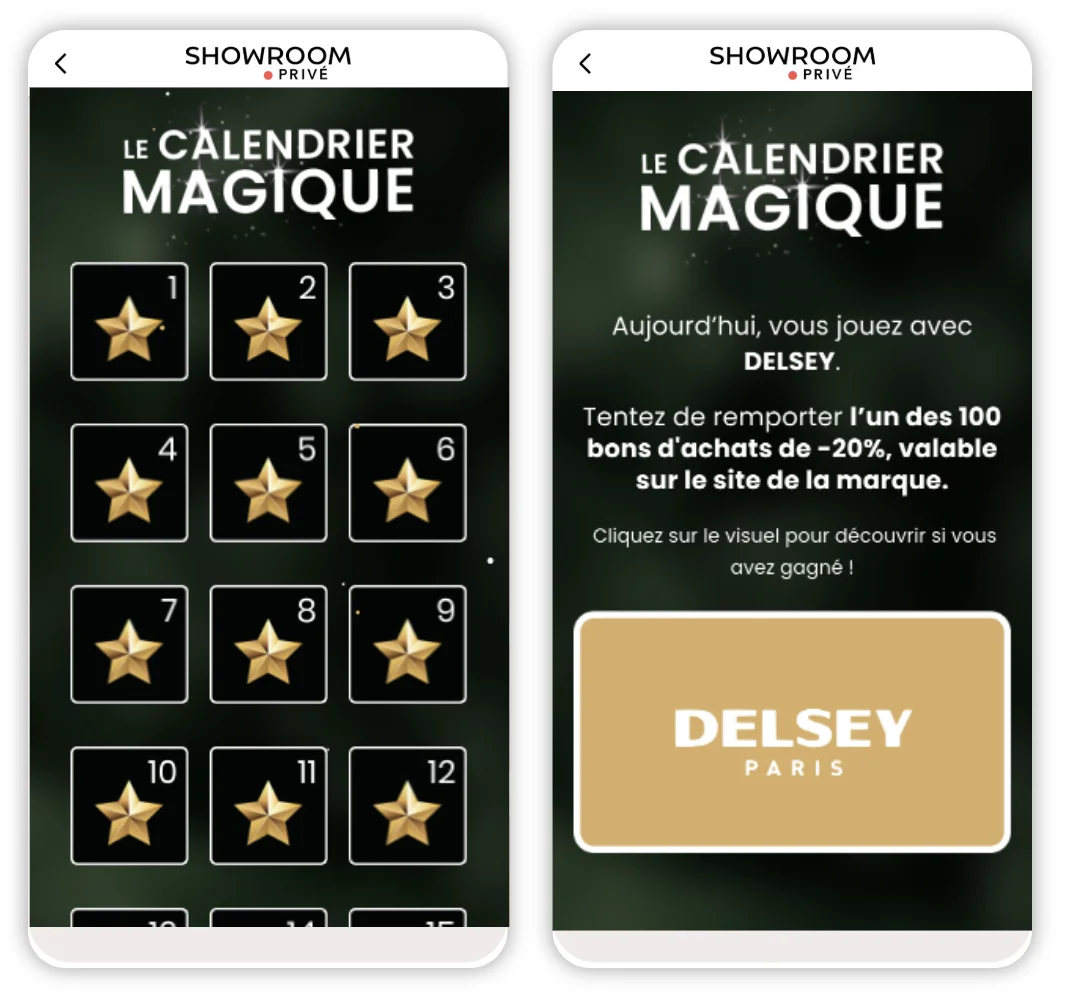
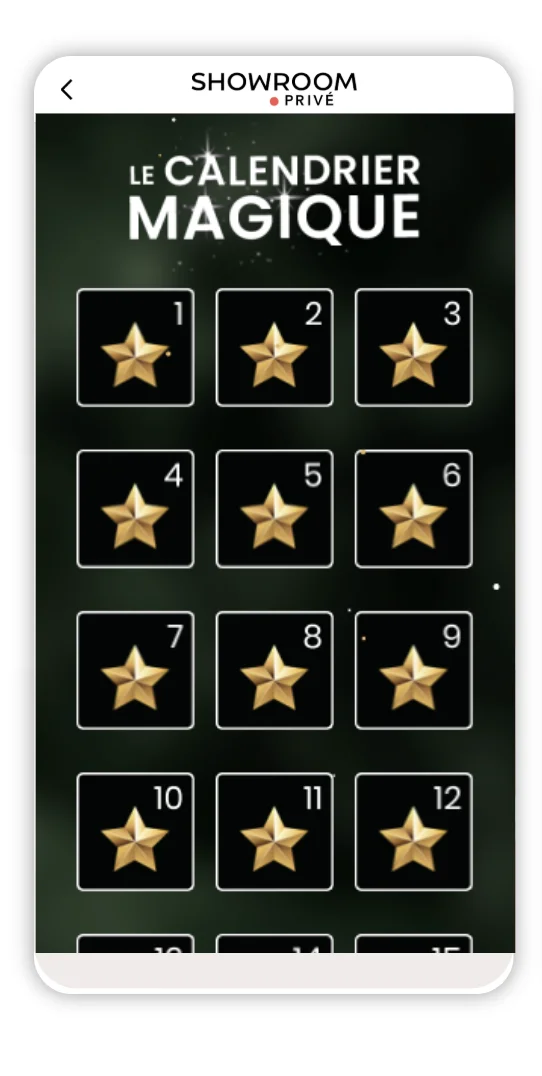
Lead generation and data enrichment: Home sector
In this sector, purchasing cycles are longer. Lead generation is essential to feed CRM systems. To mark its 35th anniversary, Cuisines Références launched a competition to raise its profile.
Result: Over 500 people agreed to be contacted by phone. 5,000 clicks were generated to the offer page. The campaign enriched the database with actionable leads.
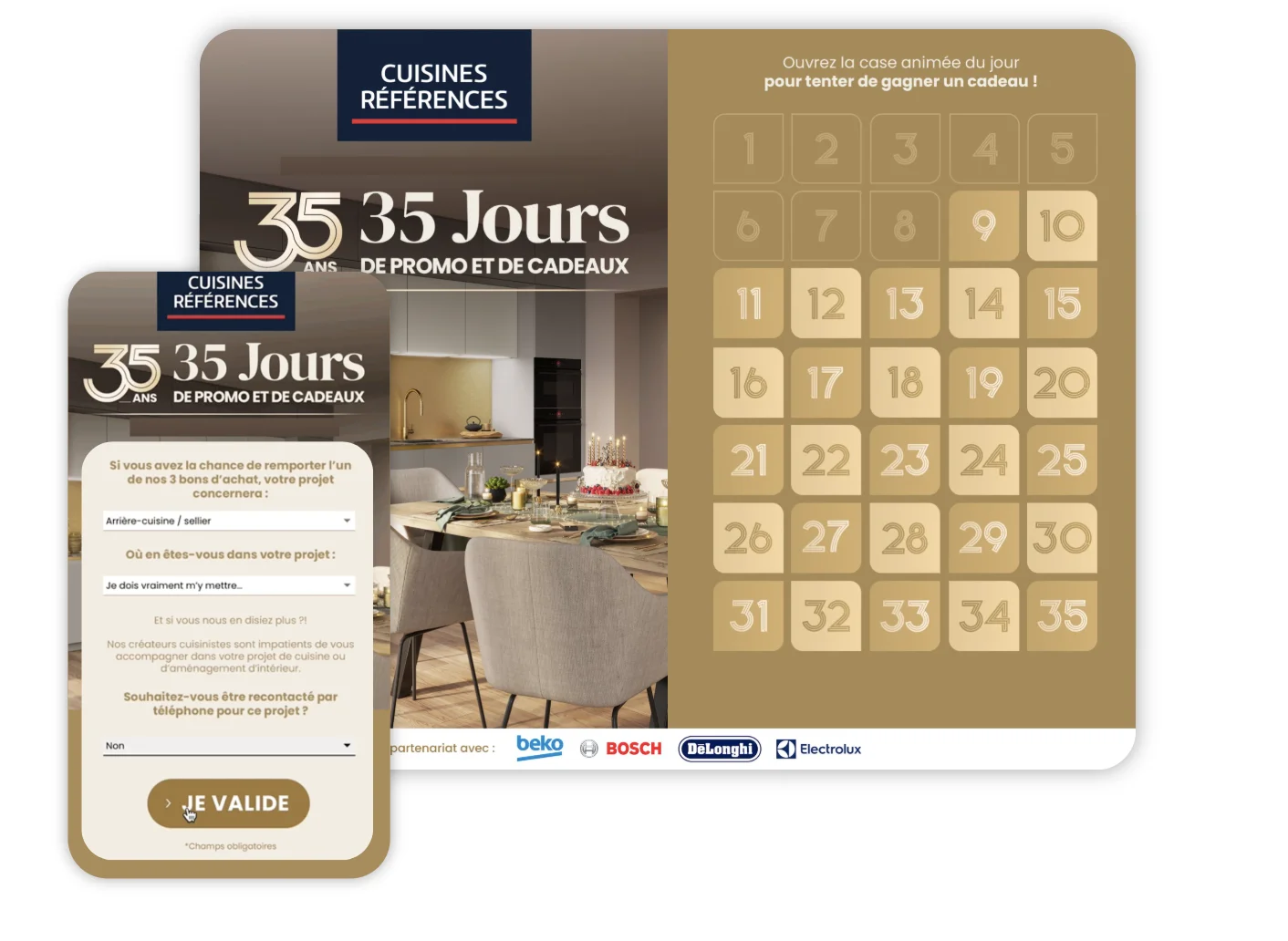

Creation of new customer accounts: transport/mobility sector
With the digitisation of services, account creation is important for user relations. MaGare+’s ‘1 Day, 1 Gift’ campaign used a Winning Calendar to boost engagement. Thanks to SSO login, the campaign encouraged account creation. It also generated an average play time of over one minute, indicating an engaging experience.
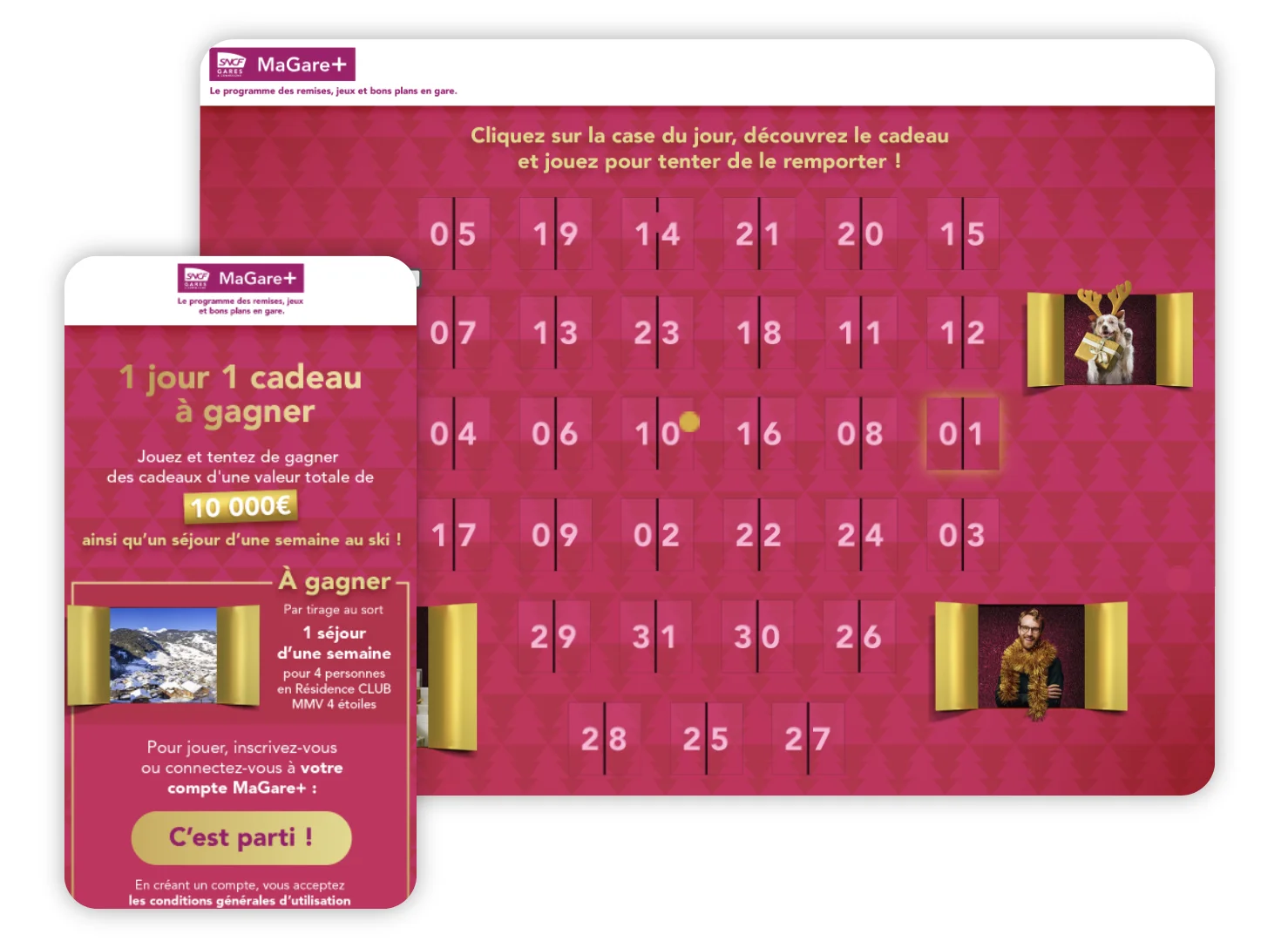

Conversion and activation upon purchase: food sector
In a competitive market, the ability to promote your offering is key. The Qui Veut du Fromage brand opted for an Advent calendar with a scratch card mechanism, including discount vouchers at the end. The campaign served as a lever for activation and lead generation, strengthening customer loyalty.
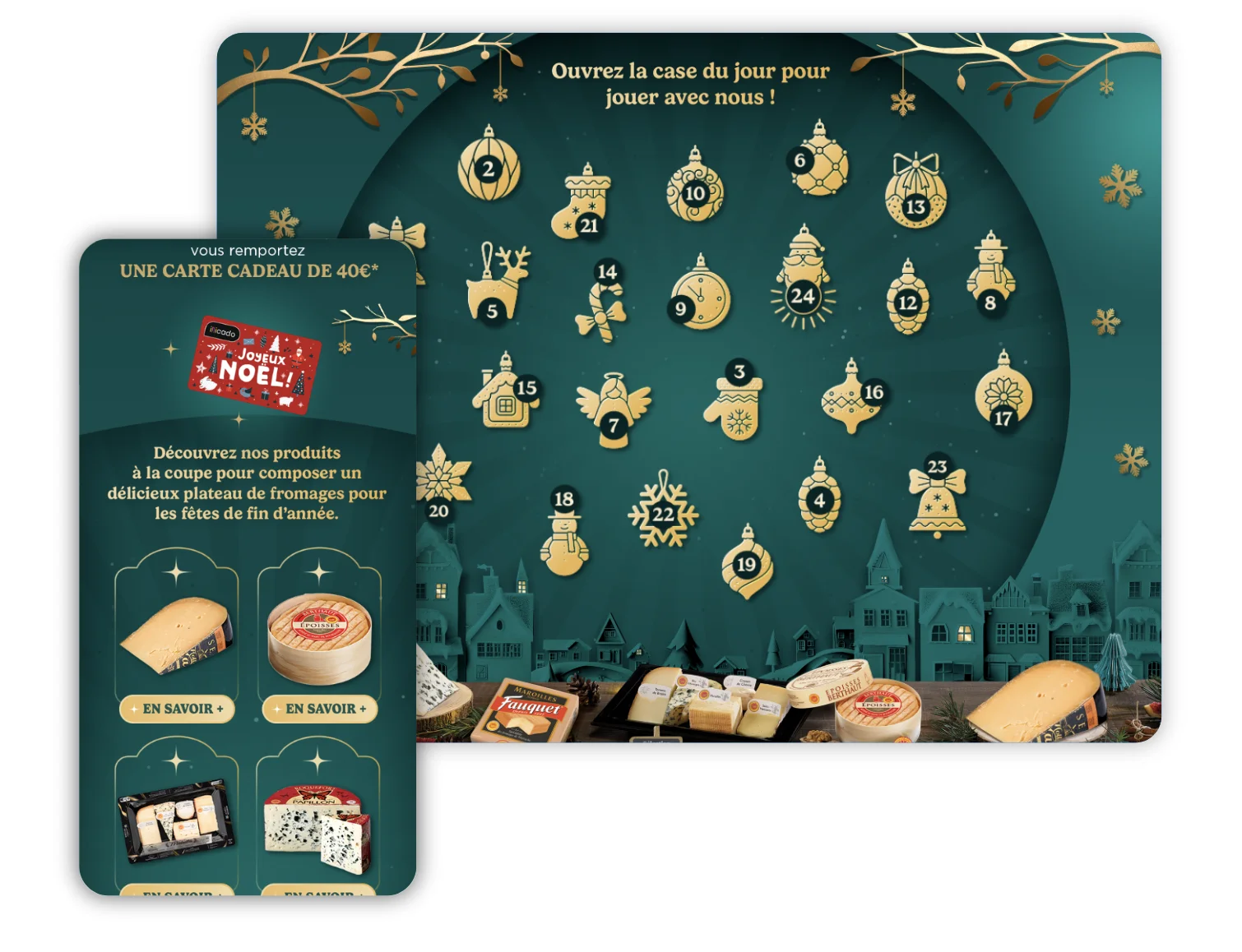
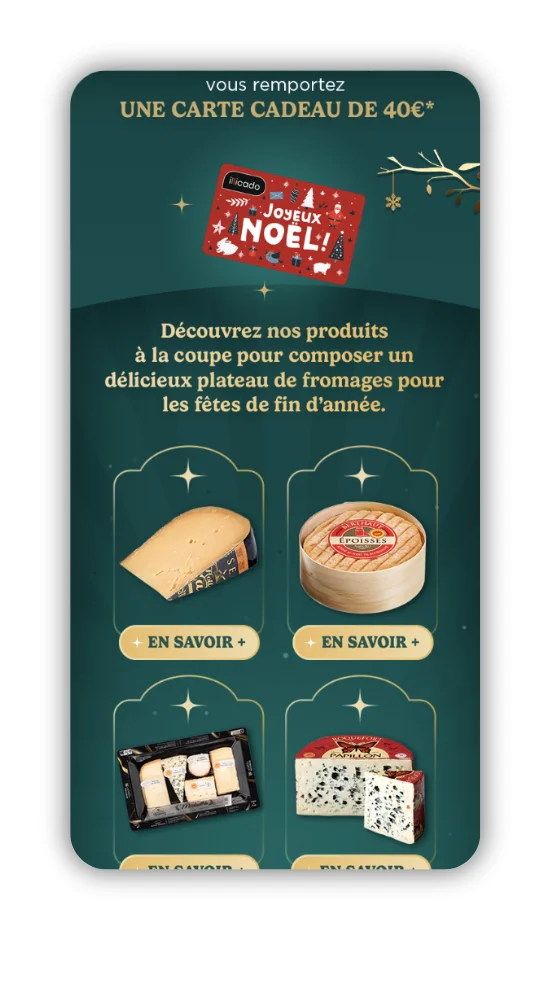
2. Selecting the appropriate interactive mechanism
The mechanics are crucial for a marketing Advent calendar. They must align with the objectives and correspond to the target audience.
Several gamified formats can be used depending on the level of interaction and the KPIs targeted:
- Instant win: ideal for maximizing participation and generating rapid momentum. This mechanism promotes recurrence, encouraging people to come back every day to try their luck. It’s ideal for high-volume operations and campaigns focused on engagement or visibility.
- Daily quizzes: combining entertainment and education. Quizzes help reinforce brand messages and highlight products in a fun way.
- Exclusive promo codes: effective for supporting sales during peak consumption periods, measuring the impact of the campaign on conversion.
3. Select attractive prizes to boost participation
The prizes offered in a marketing Advent calendar play a role in engaging participants. The more desirable the prizes, the higher the participation rate and repeat visits will be.
Co-branding is an effective way to optimise campaign ROI while increasing its appeal. By partnering with other companies, it becomes possible to offer attractive prizes. This allows costs to be shared and visibility to be leveraged.
4. Opt for an omnichannel distribution strategy to increase reach
The distribution strategy maximises visibility and reaches all audiences. An omnichannel approach amplifies impact by activating touchpoints while ensuring consistency in messaging.
Deployment can include proprietary channels (website, mobile app, social media). But it can also include paid channels (display campaigns, social ads, influencers). This distribution encourages repeat participation by making the calendar accessible regardless of the entry point.
Showroomprivé is a great example of how effective this approach can be. By adding its Advent Calendar to its mobile app, the brand was able to engage its audience where they were active, while also promoting its partners.
5. Analyse performance to improve future campaigns
Setting up a marketing Advent calendar provides valuable data for refining digital strategies.
Brands are encouraged to:
- Define priority KPIs: participation rate, recurrence, conversion rate, volume of qualified leads, page views, account creation. The game can be designed to boost these key KPIs.
- Analyse and leverage insights to identify performance drivers and detect friction points in the user journey.
Conclusion
The marketing Advent calendar is a powerful strategic tool for engaging, converting and retaining your audience… Provided it is well thought out, personalised and distributed in the best possible way. To turn this key moment into a real success, it’s time to take action by creating your winning calendar with Adictiz.








